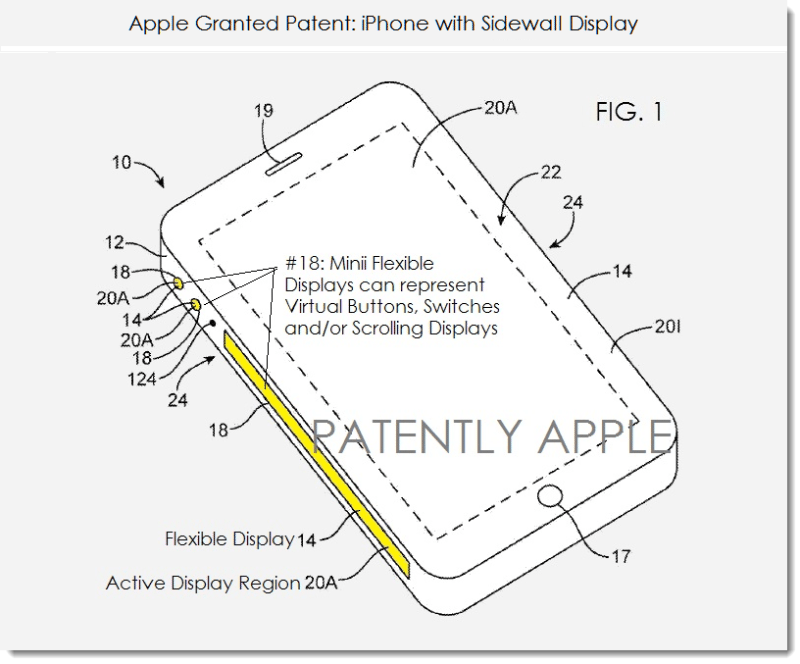Is a New iPhone with Digital ‘Force Touch’ Side Buttons in the Works?
 Credit: Bili Bili
Credit: Bili Bili
Toggle Dark Mode
Back in August of 2016, the U.S. Patent and Trademark Office (USPTO) published an Apple patent titled “Electronic devices with sidewall displays” which described the company’s vision of an iPhone boasting side-mounted display panels.
These panels, according to the original patent, “may alternately function as virtual buttons, virtual switches, or informational displays” which are supplemental to the iPhone’s front-side LCD or OLED display.
The original patent, No. 9,411,451, was published around the same time Apple was granted other curved glass display patents. Collectively, they envision an iPhone model boasting curved display glass, which would be capable of forming “active sidewalls with virtual buttons” strategically placed along the devices outer edge.
Earlier this week the USPTO published yet another Apple patent which is apparently an update to the tech giant’s original sidewall display patent — though it appears to add a number additional details and descriptions about the technology.
Force Touch
Apple’s latest patent, No. 20180052540, focuses almost exclusively on the sidewall glass, itself, which Apple explains is not only able to detect a finger press but, more importantly, “force measurements” too.
In some cases, Apple refers to this sidewall glass as a “force sensor” similar to the tech giant’s other Force-based technologies including 3D Touch and Force Touch-equipped devices like the Magic Mouse 2, Magic Trackpad 2, and more.
Haptic Feedback
The latest patent literature also talks about a “vibrator haptic effect” supplemented by an “audio output in response to the force measurement” implying that the panel would function similar to Apple’s existing haptic feedback technology powered by its proprietary Taptic Engine.
Flexible Display
“The flexible display” meanwhile, “may be used for displaying information and visual feedback to a user and for accepting input from a user” Apple’s patent application explains, adding that “Active portions of the display configured for user input and output functions may be separated from inactive portions of the display using an opaque masking layer.”

Apple’s patent (FIG. 1) illustrates the iPhone design featuring “mini flexible displays” (14, 20A) separated by the opaque masking layer described above (18).
Worth noting is that both patents discussed in this article are, technically, one and the same. This week’s patent is but a continuation of the original and seeks primarily to explain the underlying technology and how a sidewall display would function in day to day use.
Will It Ever Be Produced?
It’s currently unknown whether Apple will endeavor one day to turn this vision into a functional product. In the same respect, the company is also said to be working on an equally interesting iPhone built around a foldable, bendable OLED display.
[The information provided in this article has NOT been confirmed by Apple and may be speculation. Provided details may not be factual. Take all rumors, tech or otherwise, with a grain of salt.]






